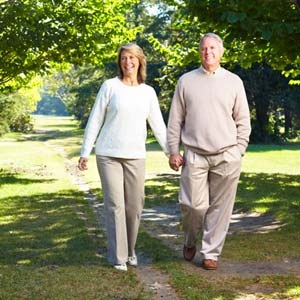
Exercise does not only help to build bones in young children and adolescents, it can also help to maintain bone in mature adults and the elderly. Teréza Hough, CEO of the National Osteoporosis Foundation of South Africa (NOFSA) explains.
Probably the most dramatic example of this is from a study where doctors examined astronauts after travelling in space at zero gravity. The most obvious consequence was that they had rather severe muscle wasting and, after examining them more extensively, it was obvious that they had also lost a substantial amount of bone. This finding highlights the importance of exercise and weight-bearing in maintaining bone density.
We now have a much better understanding of the relationship between bone density and muscle mass. We know that we cannot depend on gravity alone to provide the mechanical stimulation that builds bone and prevents it from wasting away – exercise also plays a key role.
It’s also true that long periods of immobilisation is bad for bones, as this results in muscle wasting and subsequent thinning of bones as was shown in one study by Dieter Felsenberg and colleagues from the Free University in Berlin and the European Space Agency. They studied healthy, young volunteers who had to remain inactive and in bed for months and were also not allowed to use their muscles for extended periods.
These so-called “terranauts” were faced with a number of problems when they were at last allowed to get up –they had weak muscle tone, could not jump or run and most importantly, lost up to 15 percent of their bone density in the short space of three months. Exercise and bone maintenance are therefore inextricably linked.
Exercise maintains old bones
Exercise must remain an important part of life and probably even more so as we age.
In a study by Mehrsheed Sinaki and colleagues, in the USA and Japan, it was found that older, postmenopausal women who used small weights to strengthen their back muscles over a period of two years, had stronger back muscles and a higher bone density in their spines than their peers who did not exercise – visible even 10 years after the study.
Even more important, these back-strengthening exercises reduced the chance of getting a fracture by almost three-fold. In these women, aged 58 to 75, only about 11% of those who exercised were found to have at least one vertebral fracture, while just over 30% had suffered a fracture in the group that had not used the exercise regimen.
Women who had not taken part in the back exercise programme were also about twice as likely to have a compression fracture in the spine, or have “wedged” vertebrae. This is a condition where a vertebra, normally rectangular in shape, is compressed at one side, making it look like a wedge. Wedging, which can be very painful, may lead to kyphosis, or curvature of the spine, if sufficient numbers of vertebrae are affected.
How much exercise do I need?
I you have not exercised regularly for a while, check with your healthcare provider before starting. This is especially important if you also have heart disease, diabetes or high blood pressure. If you have osteoporosis, ask a physiotherapist to help with a safe exercise plan. Start slowly and remember that exercise should always be done in a pain-free range of motion.
Weight-bearing exercises should be done for 30 minutes on most days of the week. You can either do this in one session or multiple times during the day. The effects on your bone are the same.
Muscle-strengthening exercises should be done about 2-3 times per week. You can also choose to do only one body part per day e.g. arms the one day, legs the next etc.
Balance and posture/functional exercises can be done every day or as often as needed. These exercises are extremely important in the elderly who needs to prevent falling as well as have a good reaction time when a fall does occur. Getting up from a chair using the legs only as well as climbing stairs, are very good. If you have posture problems (round shoulders, stooped back), ask a physiotherapist to help you work out a programme.
People with osteoporosis, and those who have had fractures, must be aware of certain limitations and must take precautions when exercising.
For example:
- Avoid jarring or twisting movements
- Avoid abrupt and sudden or high impact movements
- Avoid abdominal curl-ups
- Avoid forward bending from the waist
- Avoid heavy lifting.




 Publications
Publications
 Partners
Partners














